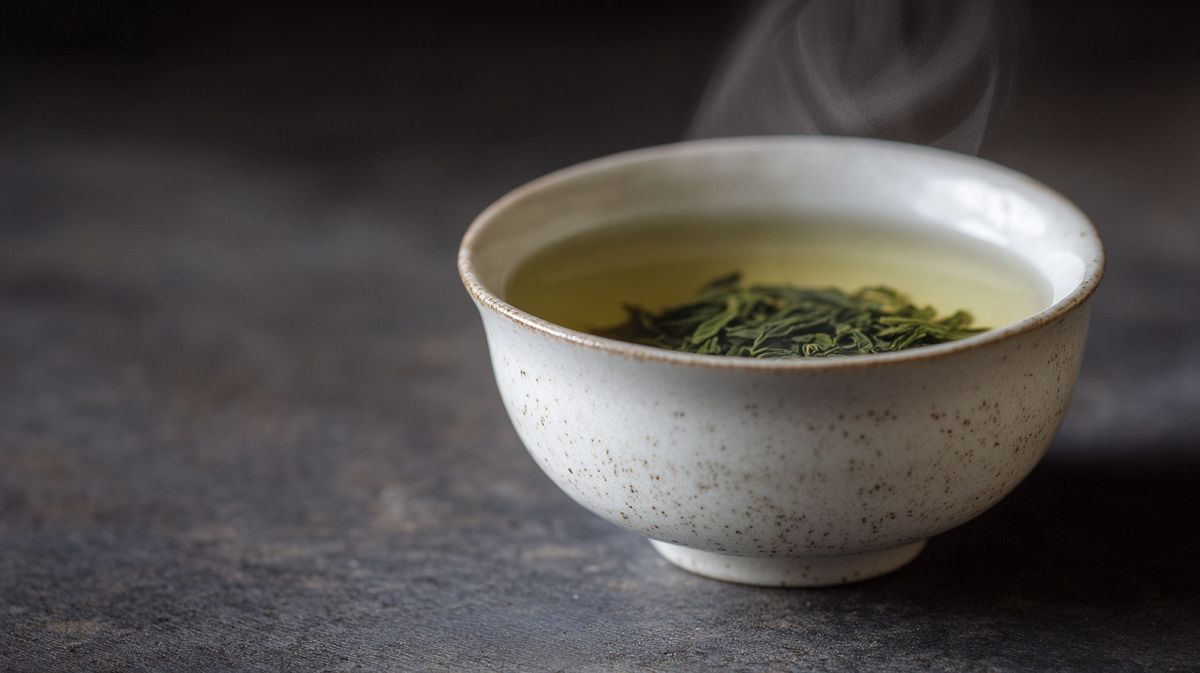
How to Prepare Jasmine Tea: The Perfect Brew for Aroma and Calm
|
|
Time to read 4 min
|
|
Time to read 4 min
Jasmine tea is more than just a drink—it's a soothing ritual, a delicate floral experience that’s loved around the world. With its fragrant blossoms and smooth green tea base, jasmine tea is both refreshing and relaxing. But if you've ever wondered how to make jasmine tea properly—or if you're unsure about steep time or temperature—you're not alone.
In this comprehensive guide, we’ll walk you through how to prepare jasmine tea, including ideal brewing temperature, steep time, and tips on preserving its natural aroma. Whether you’re using loose leaf tea or tea bags, this article will help you make the most out of every cup.
Before diving into how to brew jasmine tea, it's helpful to understand what makes it so special.
Jasmine tea is typically made by scenting green tea leaves with fresh jasmine blossoms. The flowers are layered over the tea leaves, allowing the natural fragrance to infuse the tea. This process may be repeated several times, creating different grades of jasmine tea—some light and delicate, others intensely aromatic.
While most jasmine teas are based on green tea, some varieties use white tea, black tea, or even oolong as the base. But green tea is by far the most traditional and commonly enjoyed version.
You may be asking: How is jasmine tea made? Here's a quick overview of the traditional process:
Harvesting Green Tea Leaves: In spring, young tea leaves are picked and processed (usually through pan-firing or steaming) to prevent oxidation.
Picking Jasmine Blossoms: Jasmine flowers are harvested in summer when they are at peak fragrance—usually early morning.
Scenting the Tea: The flowers are placed over the dried tea leaves in layers, often overnight when the blooms naturally open and release their aroma.
Repetition for Quality: High-end jasmine teas may go through this layering process 5 to 7 times, absorbing deeper layers of floral essence.
Final Drying: The tea is gently dried to remove moisture and stabilize the scent.
This centuries-old method is what gives jasmine tea its calming floral fragrance and clean, refreshing flavor.
Let’s break down exactly how to make jasmine tea at home—whether you’re using loose leaves or tea bags.
High-quality jasmine green tea (loose leaf recommended)
Filtered water
Kettle or temperature-controlled electric kettle
Teacup or teapot
Optional: Tea strainer or infuser
A crucial step in learning how to brew jasmine tea is water temperature. Since jasmine tea is most often made with green tea leaves, using boiling water can scorch them and make the tea bitter.
So, what’s the correct jasmine tea brewing temperature?
175°F to 185°F (80°C to 85°C)
This moderate temperature helps preserve the delicate aroma and prevents bitterness.
🔍 Tip: If you don’t have a thermometer, boil the water and let it cool for 2–3 minutes before pouring it over your tea.
Jasmine tea steep time is just as important as temperature. Steeping for too long can make your tea taste bitter and overpower the floral notes.
2 to 3 minutes for loose leaf jasmine tea
1.5 to 2 minutes for jasmine tea bags
If you're unsure how long to brew jasmine tea, start with 2 minutes and taste it. You can always steep it a little longer for a stronger flavor.
Here’s a no-fail jasmine tea recipe to enjoy at home:
Ingredients:
1 teaspoon of jasmine green tea leaves (or 1 tea bag)
1 cup (8 oz) of filtered water
Optional: Honey or rock sugar
Steps:
Heat water to 175–185°F.
Add tea leaves to a teapot or infuser.
Pour hot water over the tea.
Steep for 2–3 minutes (adjust to taste).
Strain or remove the tea bag.
Sip and enjoy!
🫖 Optional second infusion: Good-quality jasmine tea can often be steeped 2–3 times. Just add 30 seconds to each steep.
Absolutely! Jasmine tea is also amazingly served cold. Simply follow the brewing instructions above, let the tea cool, then refrigerate and serve over ice.
You can also cold brew it by steeping 1 tablespoon of jasmine tea in 1 liter of cold water overnight in the fridge.
If you're serious about enjoying jasmine tea at its best, we always recommend using loose leaf tea. It delivers better aroma, richer flavor, and often comes from higher-quality sources.
That said, jasmine tea bags are convenient and great for beginners or casual drinkers. Just remember to reduce the steep time, as tea bags tend to infuse faster.
Jasmine tea has moderate caffeine —less than coffee but more than most herbal teas.
15–60 mg per cup, depending on the tea base and steep time
If you're sensitive to caffeine, steep for a shorter time or enjoy jasmine tea earlier in the day.
While this guide focuses on how to brew jasmine tea, it’s worth noting that jasmine tea is also known for:
Supporting relaxation and reducing stress
Aiding digestion after meals
Providing antioxidants
Promoting gentle alertness without jitters
The brewing process enhances these benefits when done correctly.
Learning how to make jasmine tea the right way transforms an ordinary cup into a moment of calm and clarity. By controlling the jasmine tea temperature, understanding how long to steep jasmine tea, and choosing the right tea leaves, you're giving yourself a daily gift of beauty and balance.
So take your time, breathe in the floral steam, and sip with intention. 🌸
Ready to explore premium jasmine tea?
At Red Rock Tea House, we offer fresh, whole-leaf jasmine green tea made using traditional scenting methods—perfect for beginners and connoisseurs alike.
2–3 minutes for loose leaf; 1.5–2 minutes for tea bags.
Between 175°F and 185°F (80–85°C).
No—boiling water can burn the tea leaves and ruin the flavor.
High-quality jasmine tea can be steeped 2–3 times.
Yes! In Chinese tea culture, jasmine tea is often steeped Gongfu-style using small teapots and short infusions.
Describe your products, collection etc...
What are you looking for?















